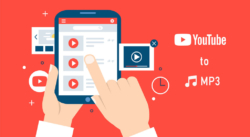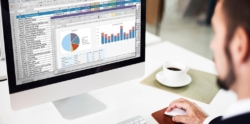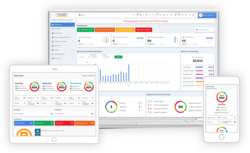Prototyping is a vital part of the design process, but why do designers prototype in the first place? There are a number of answers to this question; everything from cost, feedback, functionality testing, and much more can be determined with a working prototype. Keep reading to learn more about why designers prototype and how it could benefit you.
From Wireframe to Prototype
Prototype software usually comes with wireframing tools as well. These helpful tools allow designers to take their designs from conceptual sketches through a digital wireframe and on to a working prototype. A wireframe helps guide the designers in their journey from conception to prototype, providing a valuable roadmap that everyone can follow and work from.
Determining the Functionality of a Design
How a website or app/software functions is vital to the usefulness of the design. A poorly functioning design with attractive aesthetic features will still experience disengagement from users, as functionality is almost always preferred over aesthetics.
The functionality helps determine whether or not a user would find your design useful in their life. Navigation, speed of loading pages, features of the app or website, and more come into play in the functionality of a design.
A prototype’s job is to provide a functioning version of the design to test these features and gather feedback. A low-fidelity prototype will help identify UX issues and is normally reserved for clients and your team. A high-fidelity prototype is as close to the final product as you’ll get and is normally what you’ll present to a client or testing panel.
Often, the conceptual drawings are a far cry from the actual functioning prototype. A good prototype will give you a better idea of where your design changed along the way, as well as any conceptual problems you may have run into along the way.
You’ll likely find some key issues in the design as well; issues that simply couldn’t be noticed on paper or in your wireframe. Make no mistake, a prototype is your go-to tool for identifying and fixing issues before releasing your final product.
Identifying Costs
You’ve probably set a budget at the beginning of your design project. Did you run over budget? Did certain aspects of the design end up costing more than your initial projections? A prototype can help you identify where in your process new costs were incurred, as well as help identify where costs may come about in the final production of your design.
This process helps you streamline production, adding necessary components or removing those components that are deemed unnecessary. By streamlining your process, you’ll save money, making the overall cost of the design and production process all the more manageable.
You can also try different design methods and prototype them, performing cost analysis on each to learn which is the most cost-effective for your budget. Remember that prototyping also has costs associated with it, so be sure to factor this into your budget when making any changes to the process.
Patents
You may have designed something completely new and unique, which means you’ll want legal protection in the form of a patent so no one can steal your design. A patent attorney is more likely to take you seriously if your design has a prototype to work with.
A prototype will tell your attorney which aspects (if any) of your design are able to be patented. From there, you can begin the paperwork and ensure that your design is forever protected from the competition. You’d be amazed at how many times companies have released unique software or products without a patent, only to find a similar product released by the competition just months later.
Always protect your work! Having a working prototype will help you secure a patent so you can rest at ease knowing your design is protected.
Pitching to Potential Clients
Which of these would convince you to purchase a product: a sketch or blueprint of a future design, or a working prototype you can use to test the product’s functions and features? You probably chose a working prototype, as would most people.
Customers like to hold or use a product before deciding to purchase it. If you’re pitching your software to a potential customer, you’ll want a working prototype to help maximize the chance of the potential customer purchasing your product.
Some investors will also turn down conceptual designs for designs with working prototypes, so if you find yourself in need of investment capital, having a prototype can help secure it. Be sure your prototype is an accurate representation of your design, and let your potential customer know whether you’re delivering a low-fi or high-fi prototype to them.
Once you begin your marketing campaigns, you’ll want a good prototype to back up the product. You can also offer a demo for new users, which is almost like a prototype except that it’s usually a trial version of the finished product. Demos are a good representation of your product’s functionality, much like a high-fidelity prototype.
Conclusion
Prototyping allows your design to come to life, complete with its final features and aesthetic design. Your concepts culminate into one final prototype before the final product is released. This is an important milestone, and the last chance to identify key issues before the product is released to the client. Take your prototypes seriously and always pay attention to feedback from both customers and your design team.






